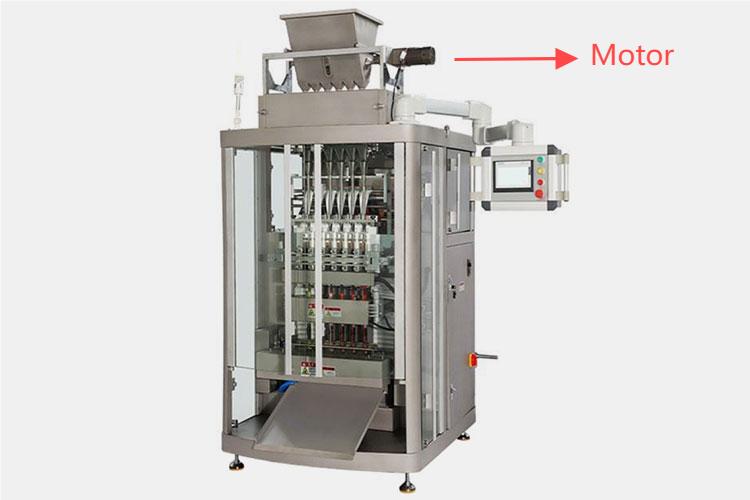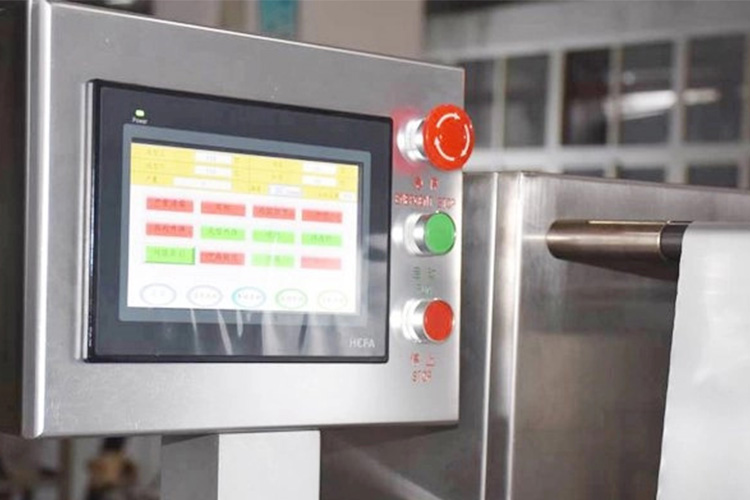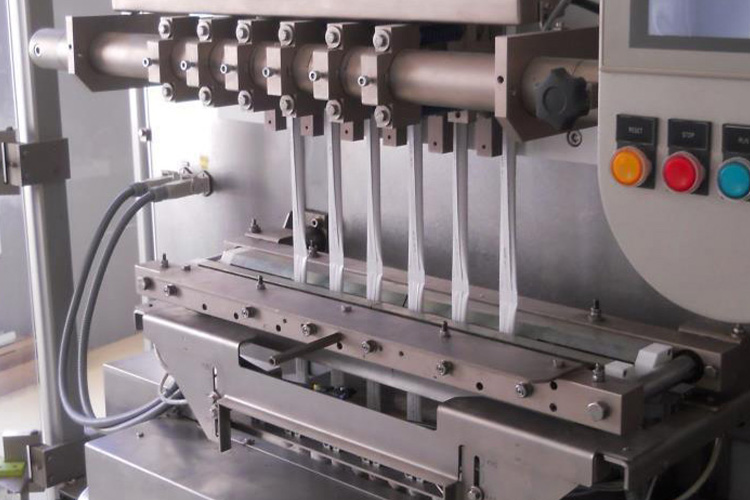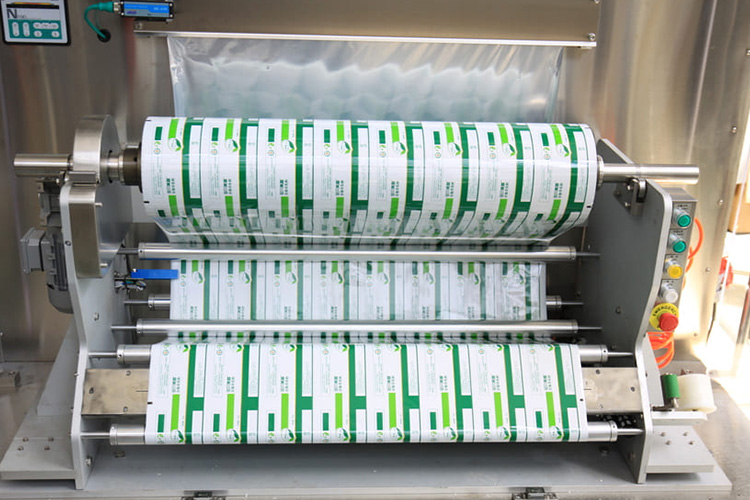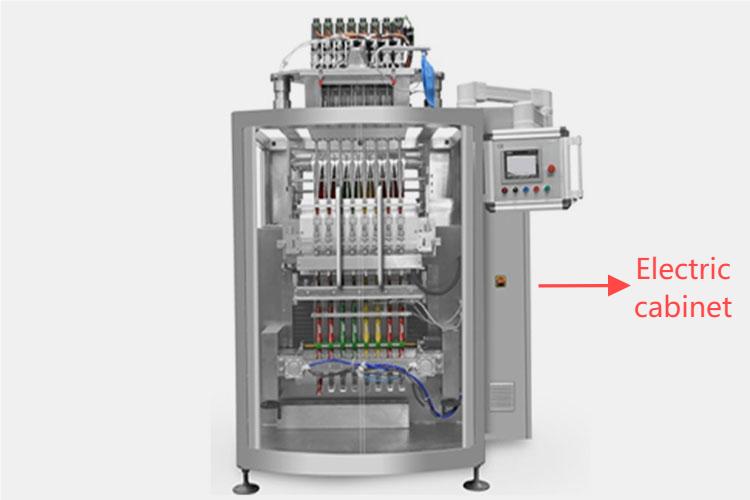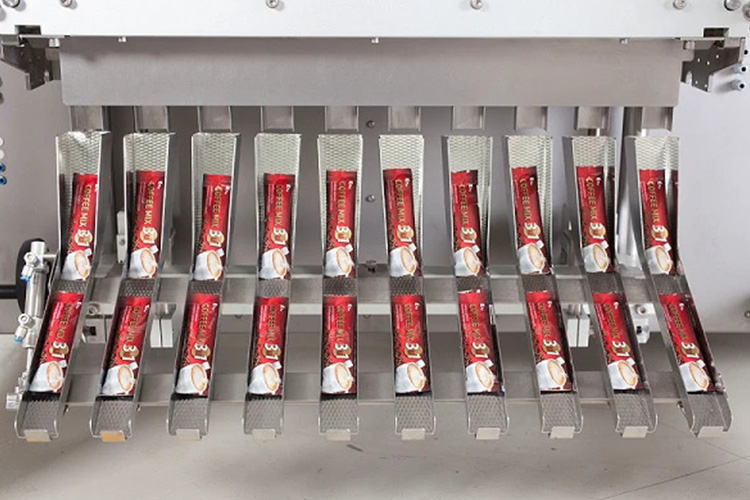10 Parts You Need To Know About the Stick Packaging Machine
With the continuous updating of packaging styles and to meet the needs of single-use products for consumers, stick packaging has gradually emerged. At present, stick packaging machines are widely used in various industries. Have you seen stick packaging machine before? How much do you know about this machine?
If you want to learn about stick packaging machines, especially about the main parts, please read this article. This article provides a detailed introduction for 10 parts of the stick packaging machine, so you will obtain a lot of gains.
Well, let’s explore the 10 parts you need know about stick packaging machines together!
1.Hopper

Hopper
The fundamental role of a hopper of stick packaging machine lies in its capacity to hold materials. Throughout the manufacturing cycle, diverse raw materials necessitate temporary containment for further processing stages. The hopper achieves this by offering a secure, enclosed space for these materials, ensuring their preservation.
Operated in conjunction with the packaging machine, the hopper acts as a conduit, precisely dispensing materials to the subsequent phases of the packaging process, including sealing and cutting, at predetermined speeds and quantities, guided by the machine’s control system.
Material selection of hopper:
| Stainless steel | Stainless steel hoppers boast advantages like resilience against corrosion, durability against wear, and effortless cleaning, making them a popular choice across industries, notably in food processing and pharmaceutical sectors. These hoppers guarantee that materials remain uncontaminated during storage and transfer, thereby preserving product hygiene and quality standards. |
| Polyethylene | Polyethylene hoppers have the characteristics of light weight, corrosion resistance, shock resistance, and wear resistance, making them suitable for conveying granular materials and short distances. However, in stick packaging machines, they are relatively less commonly used due to their potential inability to withstand significant impact forces and weight. |
| Aluminum | Aluminum hoppers have the advantages of lightweight and high corrosion resistance, but their application in stick packaging machines is also limited because they may not meet the packaging needs of certain specific materials. |
2.Motor
Motor
The motor serves as the vital energy source for the stick packaging machine, powering its entire operation, encompassing the blade cutter, forming, sealing unit, and more. Its performance is instrumental in determining the production efficiency, stability, and dependability of the packaging process.
The servo motor, specifically, orchestrates the movement of various packaging machine components via the transmission system, facilitating tasks like conveying, precise positioning, cutting, and sealing of packaging materials.
Additionally, it provides real-time feedback on position, speed, and other critical parameters to the control system, enabling closed-loop control that ensures the packaging process remains accurate, stable, and reliable.
3.PLC Touch Screen
The PLC-integrated touchscreen system serves as the pivotal control interface for stick packaging machine, seamlessly blending PLC (Programmable Logic Controller) technology with an intuitive touchscreen display. This advanced setup facilitates seamless communication between operators and the machine, enabling the receipt of operational commands and parameter adjustments via the touchscreen’s user-friendly interface.
The touchscreen acts as the command center, accepting inputs from operators in the form of touches on buttons, menus, or graphical icons. These inputs are then swiftly conveyed to the PLC control system, which in turn orchestrates the diverse functions of the stick packaging machine. This includes initiating and halting operations, fine-tuning speeds, toggling between operating modes, and executing a myriad of other critical tasks.
By streamlining the interaction between human operators and the automated packaging process, this integrated PLC touchscreen solution enhances operational efficiency, precision, and overall user experience.
4.Sensor
Sensor - Sourced: sensortips
A sensor is a device that can detect, convert, and transmit physical quantities related to the operation of a stick packaging machine, such as position, speed, weight, color, etc. It provides necessary information for the control system of the packaging machine to achieve precise packaging operations by converting detected physical quantities into measurable and processable signals.
During the transportation of packaging film, the color code sensor can detect the position of the color code on the film, thereby controlling the precise action of the cutting blade or sealing device, ensuring the accuracy of the packaging sealing position.
At the same time, position sensors and speed sensors work together to monitor real-time changes in the position and speed of packaging materials, providing feedback signals to the control system to adjust the operating status of the packaging machine.
5.Forming Tube
Forming Tube - sourced: vikingmasek
At the heart of a stick packaging machine lies a meticulously crafted forming tube, a tubular component that plays a pivotal role in directing and shaping packaging materials into the precise stick packaging bag form.
Crafted from durable, high-performance materials like stainless steel and aluminum alloy, these forming tubes are engineered to withstand high temperatures, resist corrosion, and facilitate effortless cleaning. Their exceptional mechanical strength and chemical stability ensure seamless compatibility with the diverse demands of the packaging process.
To ensure the accuracy and quality of packaging bags, the design and manufacturing of forming tubes need to meet high precision requirements. This includes requirements for the diameter, wall thickness, surface smoothness, and other aspects of the forming tube.
6.Blade Cutters
Blade Cutters - Sourced: vikingmasek
The blade cutter serves as a crucial element within the stick packaging machine, tasked with precision-cutting continuous packaging material into precise, specification-compliant sticks. Driven by a powerful motor, this cutter swiftly descends or traverses, applying a meticulous and uniform pressure to the material, ensuring a clean, accurate cut.
Once the cutting operation is successfully executed, the workbench or conveyor system seamlessly transitions the newly formed stick packaging material to the subsequent stage of processing or packaging, facilitating a smooth, continuous workflow.
7.Sealing System
Sealing System - Sourced: Aipak
The sealing system assumes the vital role of ensuring the impermeability and structural integrity of filled packaging containers. It encompasses a range of sealing techniques, including but not limited to hot sealing and cold sealing, tailored to the specific nature of the packaging material and the stipulated requirements for packaging.
| Heat sealing | Heat sealing is accomplished by strategically applying heat to the packaging material at the designated sealing point, thereby establishing a secure seal. Within the realm of stick packaging machine, the heat sealing apparatus typically incorporates heating elements (heating wires, plates, etc.), a sophisticated pressure system, and a precise control mechanism to orchestrate the sealing process. |
| Cold sealing | Cold sealing represents a technique that joins packaging materials seamlessly without resorting to heat, relying instead on physical or chemical interactions. In the context of stick packaging machines, this process often leverages methods like ultrasonic waves, pressure application, or the use of adhesives to achieve the desired bond between materials. |
8.Film Unwinding Disk
Film Unwinding Disk - Sourced: Great Pack
The film unwinding disk is responsible for smoothly and continuously rolling the film onto the packaging position for subsequent packaging operations. The control system of the stick packaging machine will issue commands to drive the motor to start and rotate the scroll. As the scroll rotates, the film begins to roll out from the scroll and is guided by a guide device to reach the packaging position.
At the same time, the tension adjustment device will adjust the roll film in real-time according to the set tension value to ensure the stability and consistency of the roll film during the unwinding process. When the film is released to a certain extent, the control system will issue a command to stop the driving device from working and wait for the next packaging operation.
9.Electric Cabinet
Electrict Cabinet
The electric cabinet of stick packaging machine provides a stable installation platform for the motor, ensuring that it can maintain stability and reduce vibration and noise during high-speed operation.
The electric cabinet is usually equipped with a power distribution system and control system, which is used to distribute external power to the motor and perform start stop, speed regulation and other operations on the motor according to the control instructions of the packaging machine.
The design of the electric cabinet also considers safety protection factors, such as dust, moisture, and electric shock, to protect the safety of the motor and operators.
10.Discharge System
Discharge System - Sourced: Diagraph
The discharge system of stick packaging machine is specifically designed for conveying packaged products, ensuring the continuity and efficiency of the production process. The discharge system is located at the end of the packaging machine and serves as a pathway for packaged products to leave the machine.
The design and performance of the discharge system also have a significant impact on the overall efficiency and packaging quality of the packaging machine.
In some advanced stick packaging machines, sorting mechanisms may also be equipped to sort and arrange products according to predetermined rules. Sorting institutions can sort products based on their color, size, weight, and other characteristics, improving the packaging quality and efficiency of subsequent processing.
Conclusion
Upon perusing the article, have you gained insights into the core parts that constitute the stick packaging machine? It’s noteworthy that while these machines often incorporate numerous intricate parts, with each model boasting its unique set, there are 10 parts that serve as the backbone of these machines. But these 10 parts are the main body of the stick packaging machine, and you must know the knowledge. Should you seek further enlightenment, feel free to reach out to Allpack at your convenience for more comprehensive information.
Don't forget to share this post!
CONTACT US
Tell us your raw material and project budget to get quotations within 24 hours.
WhatsApp Us: +86 181 7101 8586
The Buyer's Guide
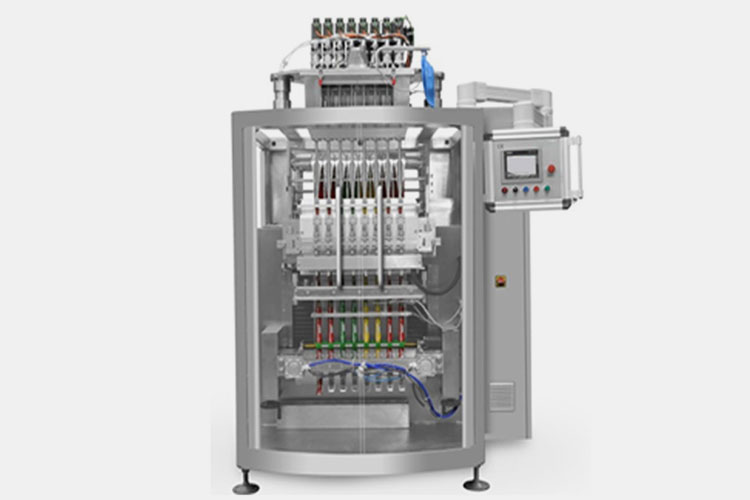
Tell us your material or budget, we'll reply you ASAP within 24 hours

